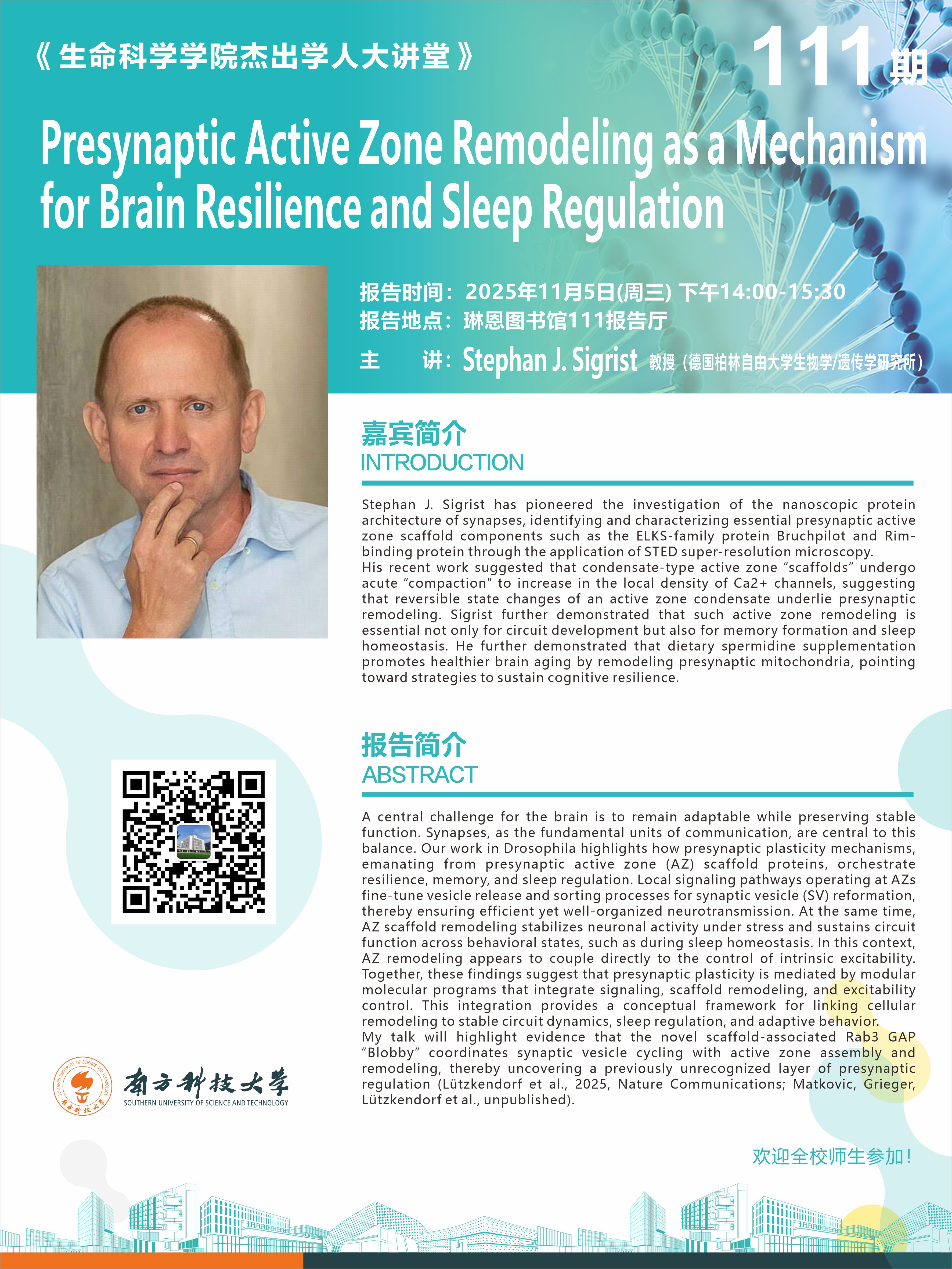
主讲人: Stephan J. Sigrist 教授
时间: 11月5日(周三) 下午14:00-15:30
地点:
题 目:Presynaptic Active Zone Remodeling as a Mechanism for Brain Resilience and Sleep Regulation
主 讲:Stephan J. Sigrist 教授(德国柏林自由大学生物学/遗传学研究所)
时 间:2025年11月5日(周三) 下午14:00-15:30
地 点:琳恩图书馆111报告厅
报告简介:
A central challenge for the brain is to remain adaptable while preserving stable function. Synapses, as the fundamental units of communication, are central to this balance. Our work in Drosophila highlights how presynaptic plasticity mechanisms, emanating from presynaptic active zone (AZ) scaffold proteins, orchestrate resilience, memory, and sleep regulation. Local signaling pathways operating at AZs fine-tune vesicle release and sorting processes for synaptic vesicle (SV) reformation, thereby ensuring efficient yet well-organized neurotransmission. At the same time, AZ scaffold remodeling stabilizes neuronal activity under stress and sustains circuit function across behavioral states, such as during sleep homeostasis. In this context, AZ remodeling appears to couple directly to the control of intrinsic excitability. Together, these findings suggest that presynaptic plasticity is mediated by modular molecular programs that integrate signaling, scaffold remodeling, and excitability control. This integration provides a conceptual framework for linking cellular remodeling to stable circuit dynamics, sleep regulation, and adaptive behavior.
My talk will highlight evidence that the novel scaffold-associated Rab3 GAP “Blobby” coordinates synaptic vesicle cycling with active zone assembly and remodeling, thereby uncovering a previously unrecognized layer of presynaptic regulation (Lützkendorf et al., 2025, Nature Communications; Matkovic, Grieger, Lützkendorf et al., unpublished).
嘉宾简介:
Stephan J. Sigrist has pioneered the investigation of the nanoscopic protein architecture of synapses, identifying and characterizing essential presynaptic active zone scaffold components such as the ELKS-family protein Bruchpilot and Rim-binding protein through the application of STED super-resolution microscopy.
His recent work suggested that condensate-type active zone “scaffolds” undergo acute “compaction” to increase in the local density of Ca2+ channels, suggesting that reversible state changes of an active zone condensate underlie presynaptic remodeling. Sigrist further demonstrated that such active zone remodeling is essential not only for circuit development but also for memory formation and sleep homeostasis. He further demonstrated that dietary spermidine supplementation promotes healthier brain aging by remodeling presynaptic mitochondria, pointing toward strategies to sustain cognitive resilience.